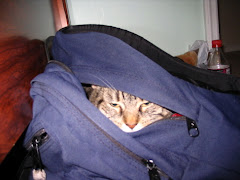
With Christmas on the way it may seem difficult to find time to read, but the longer nights and colder weather make this a perfect time to curl up with a good book when you're not making out that Christmas list. Here are some new fiction and fantasy titles for tween readers, filled with adventure and exciting characters. Look for these books using the World Catalog and Amazon.com search boxes here on BookBag. There is also information and a link to the Share Literacy program, which provides reading materials for at-risk readers and their families.
Al Capone Shines My Shoes, by Gennifer Chlodenko (Dial Books) Historical Fiction. On Alcatraz Island in 1935, 12-year-old Moose Flanagan, son of a prison guard, finds a note in his laundry from inmate number 85 -- notorious gangster Al Capone. In the previous book Al Capone Does My Shirts, the famous thug supposedly pulled some strings to get Moose's autistic sister, Natalie, admitted into a special San Francisco boarding school. Now the mobster wants a favor in return ... and Moose is scared. Packed with schemes, shenanigans, and historically accurate details of life on Alcatraz, this is a fun and fascinating read.
 The Lost Conspiracy, by Frances Hardinge (HarperCollins) Fantasy. Hathin and her sister Arilou live in a coastal village with their people, an outcast tribe called the Lace who bejewel their teeth, smile constantly, and worship a trio of restless volcanoes on their island home, Gullstruck. After a representative of the Lost -- people who are able to disconnect their senses from their bodies and observe anything on the island -- comes to determine whether Arilou might be one of them, a tragedy sets the sisters against a whole host of enemies ... and on the run. If you like books that invent amazing worlds and societies and make you feel as though you're living in them -- well, welcome to Gullstruck.
The Lost Conspiracy, by Frances Hardinge (HarperCollins) Fantasy. Hathin and her sister Arilou live in a coastal village with their people, an outcast tribe called the Lace who bejewel their teeth, smile constantly, and worship a trio of restless volcanoes on their island home, Gullstruck. After a representative of the Lost -- people who are able to disconnect their senses from their bodies and observe anything on the island -- comes to determine whether Arilou might be one of them, a tragedy sets the sisters against a whole host of enemies ... and on the run. If you like books that invent amazing worlds and societies and make you feel as though you're living in them -- well, welcome to Gullstruck.Everything for a Dog, by Ann B. Martin (Felwel and Friends) Fiction. Fans of the book A Dog's Life, the story of a stray puppy named Squirrel, may have wondered what became of Squirrel's brother Bone after the two of them were separated. In Everything for a Dog, Bone is rescued, but that's just the beginning of his story of finding -- and losing -- a whole series of homes. Bone narrates chapters that alternate with the stories of two boys, Charlie and Henry, whose paths are about to cross with his in a most unexpected way. This touching tale is sure to satisfy animal lovers and fans of dog stories like Shiloh.
 The Share Literacy program
The Share Literacy programShare Literacy promotes the development of reading and thinking skills. The California-based national program partners with agencies serving poverty-level and low-income families, after-school programs, and organizations providing ESL and adult literacy instruction. Over the past seven years, with the help of grants from several foundations and many individual donors, Share Literacy has served more than 150,000 disadvantaged children in the U.S.
Program goals:
• Improve literacy skills
• Encourage the development of higher-level thinking skills
• Ensure that every child participating in a Share Literacy program takes home at least one book to keep
• Improve parental knowledge and involvement in the development of their children's literacy
• Promote tolerance and understanding by using multicultural literature designed to teach problem-solving and commonality of human experience
• Improve teachers' instructional skills in the areas of early literacy and literacy training
The Share Literacy program provides books and training materials, plus professional development services, at cost. It relies on donations and grants to cover these costs to enable the program to continue and expand. Share Literacy chapters around the nation are administered by volunteers; 100% of contributions goes towards professional development training and materials for teachers and Home Literacy kits for children. To find out more about the program, visit the Share Literacy website.


 to inspire younger kids.
to inspire younger kids. 
























